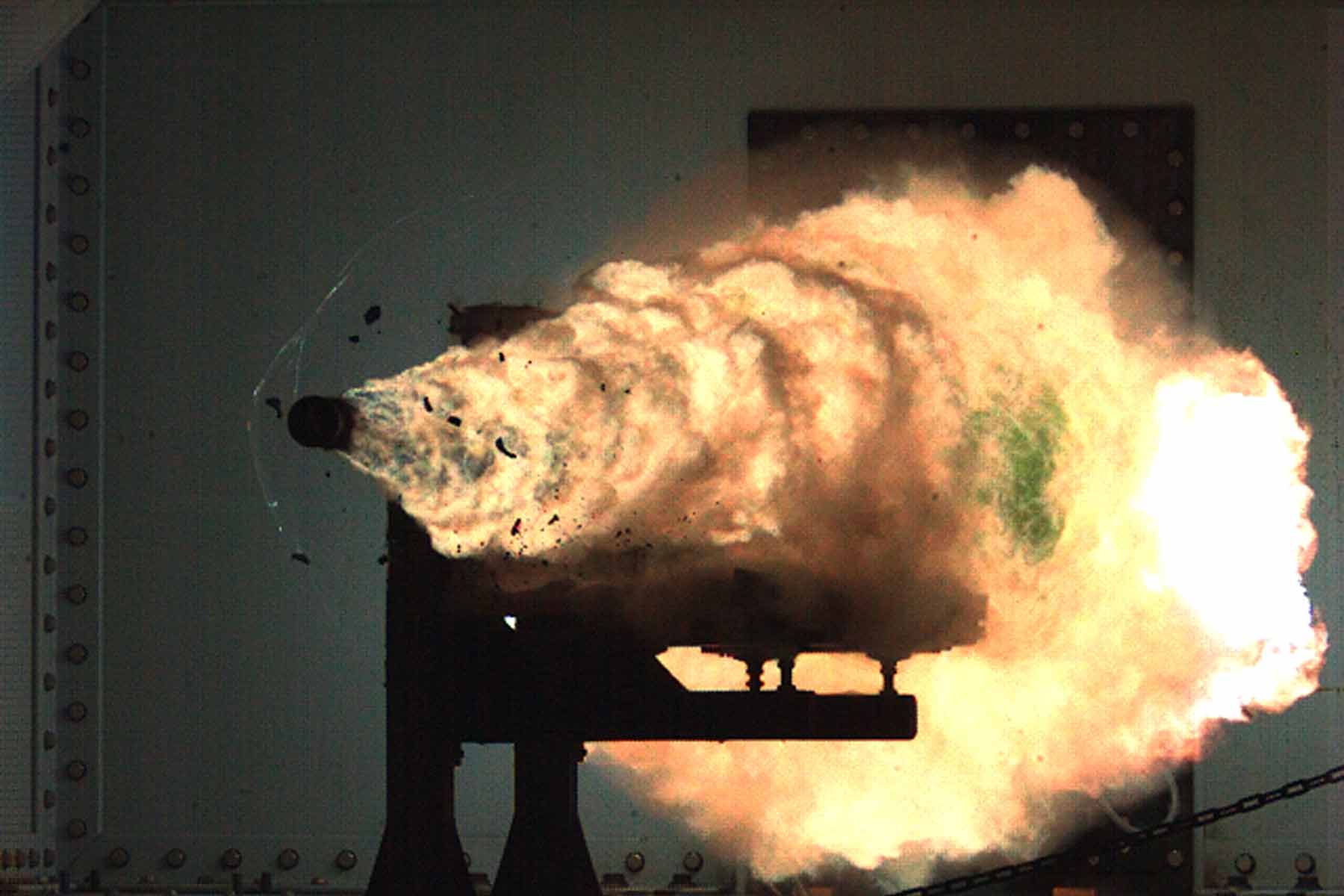
The clock seems to be running out for the Navy‘s much-hyped electromagnetic railgun after the service closed down development on the hypervelocity round it was meant to fire in order to make room for new programs. An overview of the White House’s fiscal 2022 budget request notes that the gun-launched guided projectile, previously called the hypervelocity projectile, has been canceled, for a savings of $5.9 million.
“[The Department of the Navy] terminated the Gun-Launched Guided Projectile Research and Development effort,” the document states. “Potential reinvestment in the program will be reevaluated after an ongoing Strategic Capabilities Officer demonstration effort in Terminal Defense Analysis is complete.”
The “realignment of resources” was one entry in a laundry list of Navy programs and platform cuts and divestments that included the accelerated retirement of the classic F/A-18 Hornet and a number of ships.
Read Next: The Army Is Putting 30mm Autocannons on More Stryker Vehicles
The meter-long projectile was first developed exclusively as a round for the Navy’s experimental railgun, a $500 million effort that purported to use electricity to fire projectiles at speeds of up to Mach 6 and ranges of up to 110 nautical miles. Despite the more than 15 years that program has spent in development without being fielded, Navy officials have continued to insist they see a future for the weapon. Then-Chief of Naval Operations Adm. John Richardson told Military.com in 2018 that the service was “fully invested” in the railgun and pushing forward with development.
The hypervelocity projectile, however, seemed to gain its own momentum after officials realized it could be paired not only with the railgun, but also with existing ship deck guns to provide high-speed, low-cost firepower.
The projectile’s most recent public outing came in 2018, when the guided-missile destroyer Dewey fired 20 of the rounds from an Mk 45 deck gun during the massive Rim of the Pacific exercise.
“You can get 15 rounds a minute for an air defense mission, as well as a surface-to-surface mission,” Bryan Clark, then of the Center for Strategic and Budgetary Assessments, told USNI News in 2019. “That adds significant missile defense capacity when you think that each of those might be replacing a [Evolved Sea Sparrow Missile] or a [Rolling Airframe Missile]. They’re a lot less expensive.”
The story also noted that the gun-launched guided projectile, or GLGP, was being considered as a round for ground-based Army and Marine Corps 155mm howitzers.
But while GLGP might be less expensive than some missile systems, which can cost $1 million to $2 million per round, it was still far from cheap. A 2020 Congressional Research Service report noted that each of the rounds cost about $85,000 in 2018 dollars.
And despite the promise GLGP seemed to hold for a range of multi-service uses, the CRS report noted that fielding to ships would involve integrating the round with existing combat systems, and additional tests and war-gaming. After five years in development, these follow-on steps have yet to take place.
“Transitioning military technology efforts from the research and development phase to the procurement phase can sometimes be a challenge,” the report said. “Some military technology efforts fail to make the transition, falling into what observers sometimes refer to as the ‘valley of death.'”
Meanwhile, the news appears equally grim for the railgun. Military technology news site The War Zone reported that the program went unfunded in next year’s budget request, with no mention of plans to resume development efforts.
— Hope Hodge Seck can be reached at [email protected]. Follow her on Twitter at @HopeSeck.
Related: Space Force Is the Only Military Service Set to Grow Under Biden’s Budget Plan
© Copyright 2021 Military.com. All rights reserved. This material may not be published, broadcast, rewritten or redistributed.
